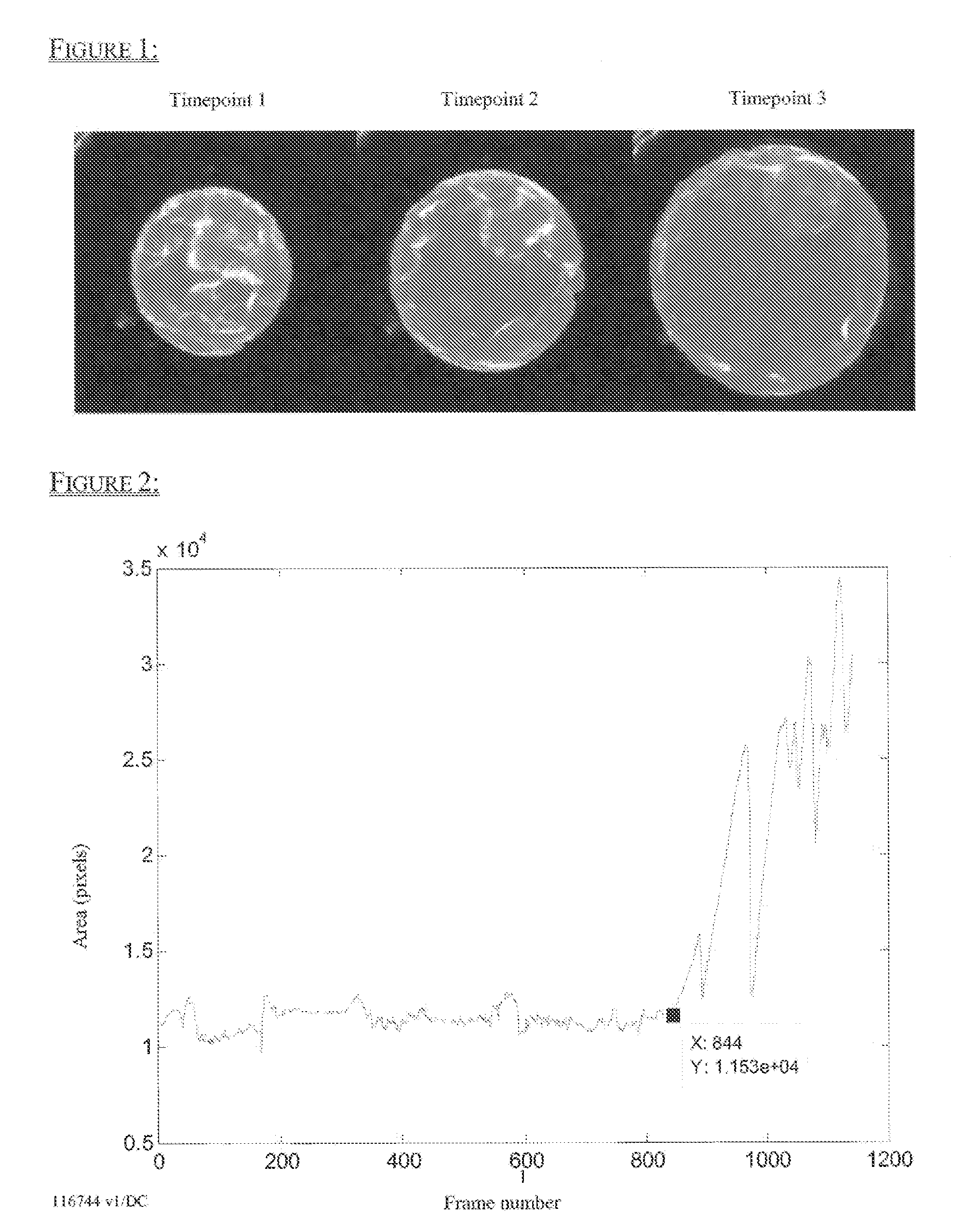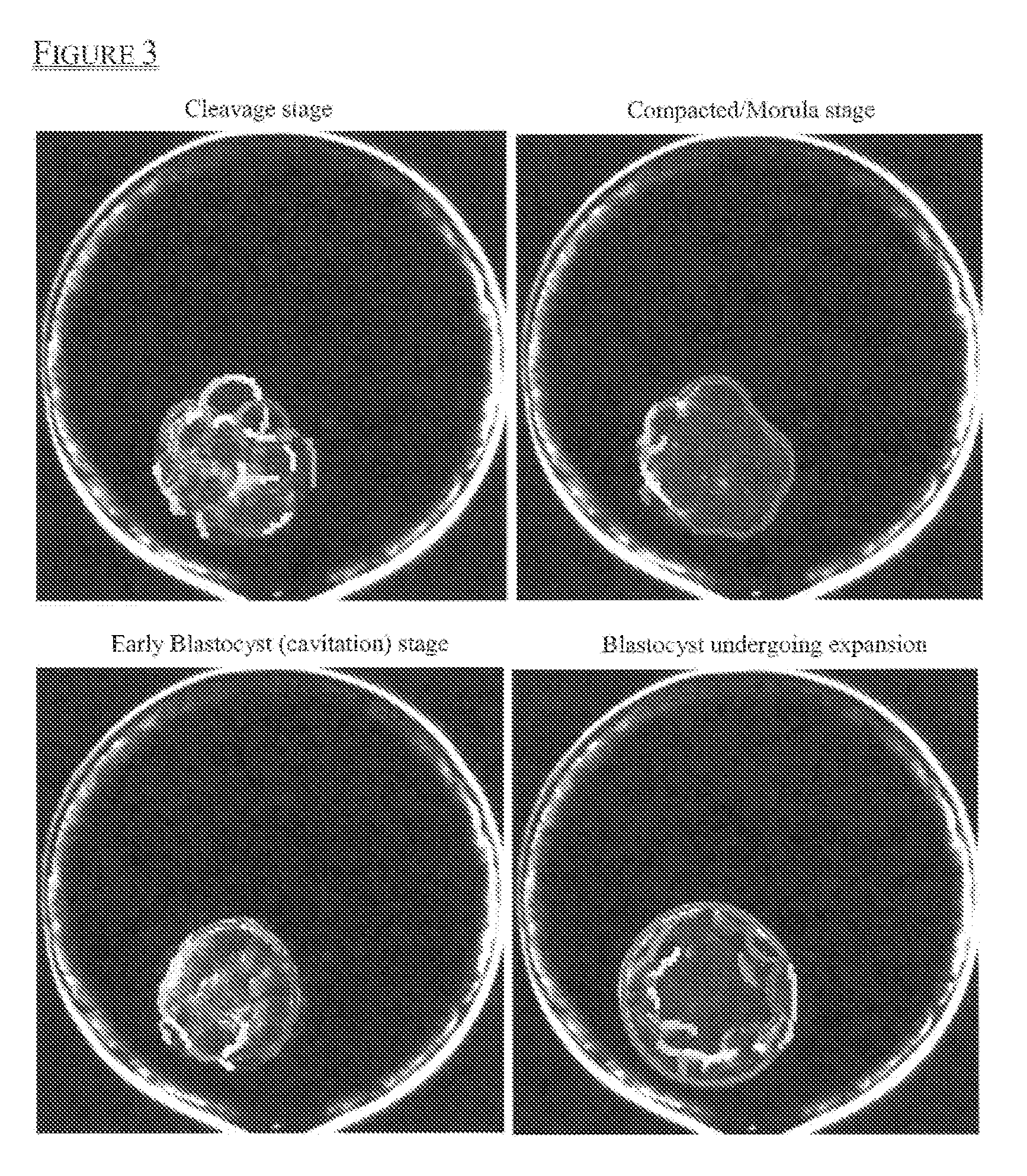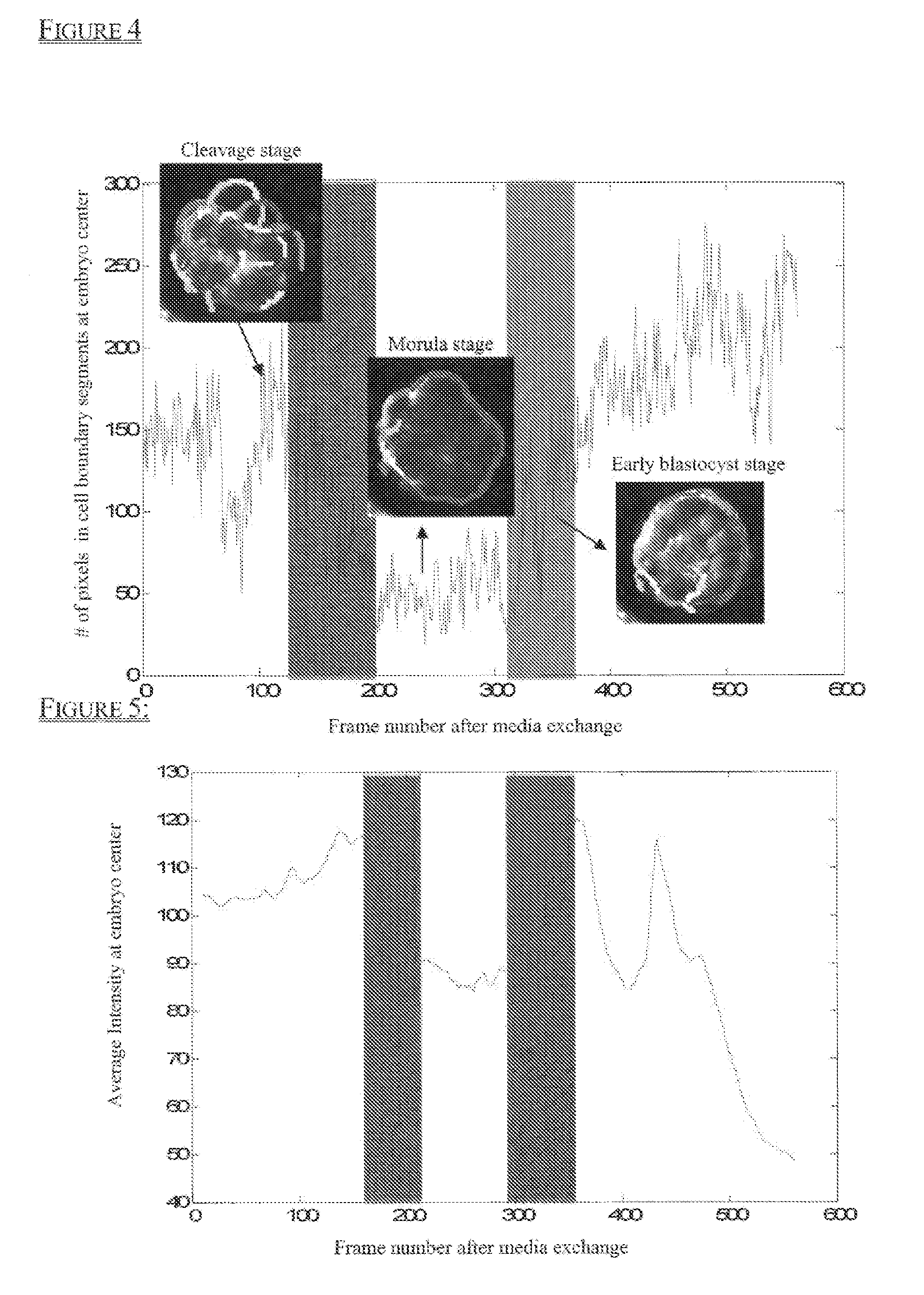Quantitative measurement of human blastocyst and morula morphology developmental kinetics
a blastocyst and morula technology, applied in the field of quantitative measurement of human blastocyst and morula morphology development kinetics, can solve the problems of low birth rate, miscarriage, and well-documented adverse outcomes for both mother and fetus, and achieve the effect of minimizing the time to pregnancy
- Summary
- Abstract
- Description
- Claims
- Application Information
AI Technical Summary
Benefits of technology
Problems solved by technology
Method used
Image
Examples
example 1
Quantitative Measurement of Blastocyst Expansion and Collapse Dynamics
[0148]In order to quantitatively measure blastocyst expansion and collapse dynamics, embryos were imaged using a time-lapse imaging system through day 5 at an image frequency of 5 minutes per frame. First, the embryo outer boundary segmentation was generated for every frame in a time lapse image sequence as illustrated in FIG. 1. The area of the embryo outer boundary segmentation was then calculated and plotted against time (FIG. 2). Timings, durations, and frequencies of blastocyst expansion and collapse were then analyzed. Increases in area over time indicate blastocyst expansion, and decreases in area over time indicate collapse. This data demonstrates that a single image feature, the area of the embryo outer boundary segmentation, can be used to identify the onset and resolution of expansion and collapse.
example 2
Quantitative Measurement of Compaction and Cavitation Dynamics
[0149]Compaction and cavitation are gradual transitioning processes, and it is challenging for human observers to identify a single time point when a transition occurs. In order to quantitatively measure compaction and cavitation events, embryos were imaged using a time-lapse imaging system through day 5 at an image frequency of 5 minutes per frame.
[0150]First, analysis was performed on all images to obtain coherent boundary features (i.e., segments) as shown in FIG. 3. The compaction process correlates to a decrease in edge-based segments located in the center of the embryo, while the cavitation process correlates to an increase in edge-based segments located in the center of the embryo. Therefore, segment distribution pattern changes over time were analyzed, and an example is shown in FIG. 4.
[0151]The second image feature analyzed was the average of integrated image intensity changes at the center of the embryo over tim...
example 3
Cavitation Parameters are Predictive of Aneuploidy and can be Combined with Other Parameters to Classify Risk of Embryonic Aneuploidy
[0156]It has been reported that more than 50% of the human embryos cultured in IVF clinics are aneuploid embryos that have an abnormal number of chromosomes. These aneuploid embryos have lower implantation rates and are not likely to result in live birth of healthy babies. Currently, pre-implantation genetic screening (PGS) is the most effective approach to select against aneuploidy embryos. However, due to its high cost, labor intensive requirements and invasive nature, less than 10% of patients that are treated for assisted reproduction undergo PGS prior to embryo transfer.
[0157]In order to develop a non-invasive time-lapse enabled assay to assess the risk of embryos being aneuploid, it was discovered that by assessing the tCav parameter, alone or in combination with other cellular parameters, embryo morphology and patient information, the likelihood...
PUM
| Property | Measurement | Unit |
|---|---|---|
| Exp Time | aaaaa | aaaaa |
| width | aaaaa | aaaaa |
| time lapse imaging | aaaaa | aaaaa |
Abstract
Description
Claims
Application Information
 Login to View More
Login to View More - R&D
- Intellectual Property
- Life Sciences
- Materials
- Tech Scout
- Unparalleled Data Quality
- Higher Quality Content
- 60% Fewer Hallucinations
Browse by: Latest US Patents, China's latest patents, Technical Efficacy Thesaurus, Application Domain, Technology Topic, Popular Technical Reports.
© 2025 PatSnap. All rights reserved.Legal|Privacy policy|Modern Slavery Act Transparency Statement|Sitemap|About US| Contact US: help@patsnap.com



